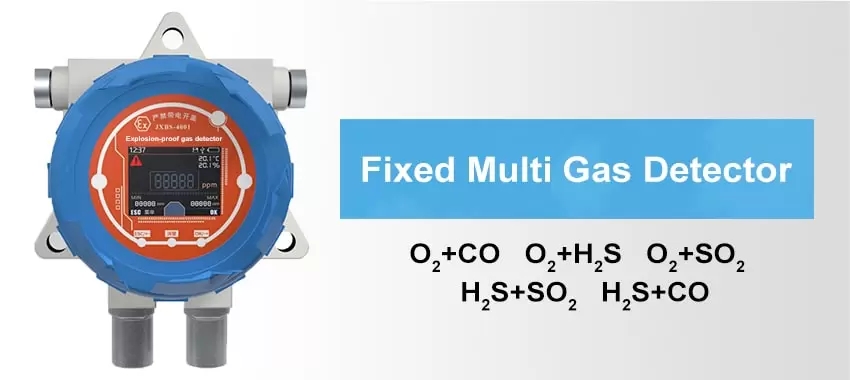Understand the Multi-gas detector

Multi-gas detector refers to the ability of a sensor or monitoring system to detect and measure multiple gases simultaneously. This capability is crucial in many industries and applications, including environmental monitoring, industrial process control, safety and health, and urban air quality management. With advances in technology, multi-gas detectors have become more sensitive, reliable, and convenient to use. In this article, we will explore the benefits of multi-gas detection and discuss future trends in this field.
Benefits of Multi-Gas Detector
Enhanced Sensitivity and Specificity
Multi-gas detector typically use various sensing technologies, such as electrochemical, optical, or semiconductor sensors, to measure the concentration of multiple gases. These sensors have been designed to be highly sensitive and specific to certain gases, allowing for accurate detection and quantification of target gases. As a result, multi-gas detectors can provide comprehensive information about the composition of air or other fluids, enabling users to take appropriate action based on the data.

Reduced Cost and Improved Efficiency
Using a multi-gas detector compared to multiple single-gas detectors can result in significant cost savings and improve efficiency. Firstly, multi-gas detectors are typically more compact and require fewer components, making them less expensive to produce and easier to maintain. Secondly, multi-gas detectors can reduce the need for multiple single-gas detectors, which require individual calibration and maintenance. This can lead to significant cost savings over the lifetime of the equipment.
Enhanced Safety and Compliance
In many industries, such as mining, oil and gas exploration, and manufacturing, gas leaks or toxic gas exposure can pose a significant safety risk. Multi-gas detector can help users identify potential hazards in a timely manner, allowing for appropriate safety measures to be taken. Additionally, multi-gas detectors can ensure compliance with environmental regulations by providing accurate data on air quality and other gases of interest.
Future Trends in Multi-Gas Detection
Advanced Materials and Technologies
The future of multi-gas detector is likely to see significant advances in advanced materials and technologies. For instance, new generations of sensors based on nanotechnology, carbon nanotubes, or graphene can improve sensitivity, selectivity, and response time. Additionally, the use of artificial intelligence (AI) and machine learning algorithms in multi-gas detectors can enable more accurate identification of gases, faster response times, and intelligent decision-making based on data analysis.

Portable and Wearable Devices
With the development of miniaturized electronics and communication technologies, multi-gas detector are likely to become smaller, lighter, and more portable. This will enable users to easily carry them in the field and collect real-time data on gas concentrations. Additionally, wearable devices that can monitor gas levels continuously are also being developed. These devices could be integrated with smartphones or other mobile devices, allowing for real-time data transmission and analysis.
Networked and Connected Systems
The trend towards “smart” devices and connected systems will also have an impact on multi-gas detection.We can incorporate multi-gas detectors into industrial automation systems, allowing real-time monitoring of air quality and other gases of interest. Then, the information is shared with other users through a cloud-based platform; Thus, cooperation among different stakeholders can be realized.
In summary, multi-gas detection is an important tool for monitoring air quality and other gases of interest. Advances in materials, technologies, miniaturization, AI algorithms, and communication will continue to shape the future of multi-gas detection.